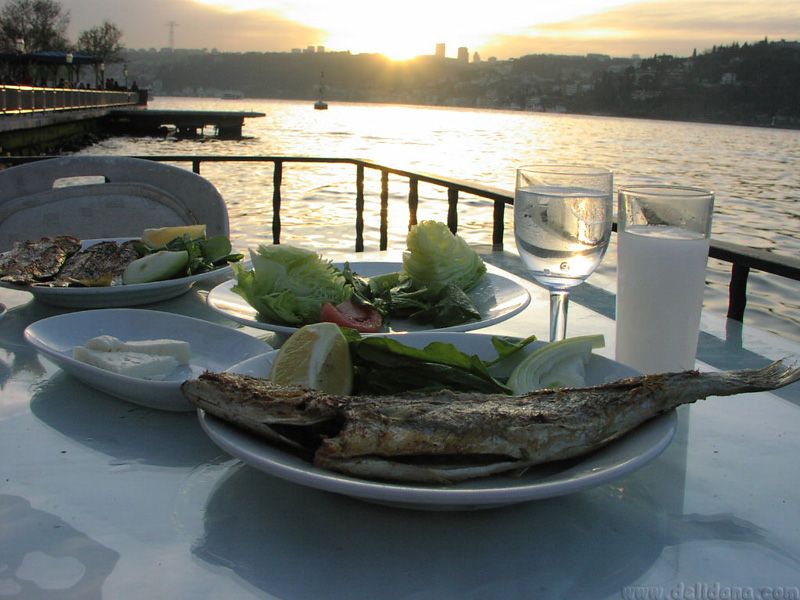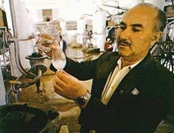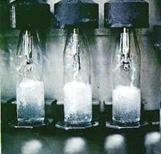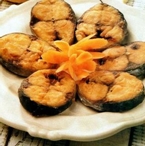


Today, drinking raki has its own traditional rituals. Most important is what
it is to be partaken with. White cheese is the main and unchangeable "meze"(appetizer)
of raki. Raki is usually drunk with cold dishes like tomatoes , cucumber and
lettuce with olive oil, lettuce and seafood (the salads of calamari, shrimp,
octopus).
Fish is also a favourite, especially mullet and mackerel, bass, bluefish.





Due to the aniseed it contains, raki changes colour and becomes a milky white when water is added and a glass of pure water to go with it gives a distinct pleasant taste. You must drink raki with a pieces of ice .If you add ice on the raki before water ,you can be scolded for this in a raki table. A drinker never add an ice before adding water on it.




You order a grilled bluefish or mackerel for second glass of raki...Cheers towards to sunset...That's the sweetness of life.
Serefinize! (sheh-REHF-ee-nee-ZEH, "In your honour!") is the proper toast.
When one thinks of Turkey or Turks, one is reminded of Raki, the traditional Turkish drink. Raki can be made from different fruits in different regions, but raisin (dried grape) is the most common. The drink made in Anatolia and known as TURKISH RAKI has a history going back 300 years.
The art of distillation which started in the Arab world and spread to the neighbouring countries was implemented when people thought of making use of the sugar in the residue of wine processing. With the addition of aniseed, raki took on its Turkish characteristic. The famous Turkish traveller Evliya Çelebi listed the artisans of Istanbul in the first volume of his book on his voyages which he wrote in 1630. Among the artisans he also mentioned the arak makers. While writing that arak was made from all kinds of plants, he also mentioned the word raki and said that drinking even one drop of this intoxicating drink was sinful. It is known that at that time in Istanbul 300 people in 100 workshop were occupied in the production and sale of this drink. Evliya Çelebi spoke of tavern-keepers as "accursed, ill omened, blame worthy" and said there were taverns all over Istanbul but especially in Samatya, Kumkapi, Balikpazari, Unkapani, Fener, Balat and the two shores of the Bosphorous and added "Galata means Taverns". Evliya Çelebi recorded the small wine shops and the kinds of wine they sold and also mentioned the taverns that sold raki, all kinds of raki, like raki wine, banana raki, mustard raki, linden raki, cinnamon raki, clove raki, pomegranate raki, hay raki, aniseed raki.